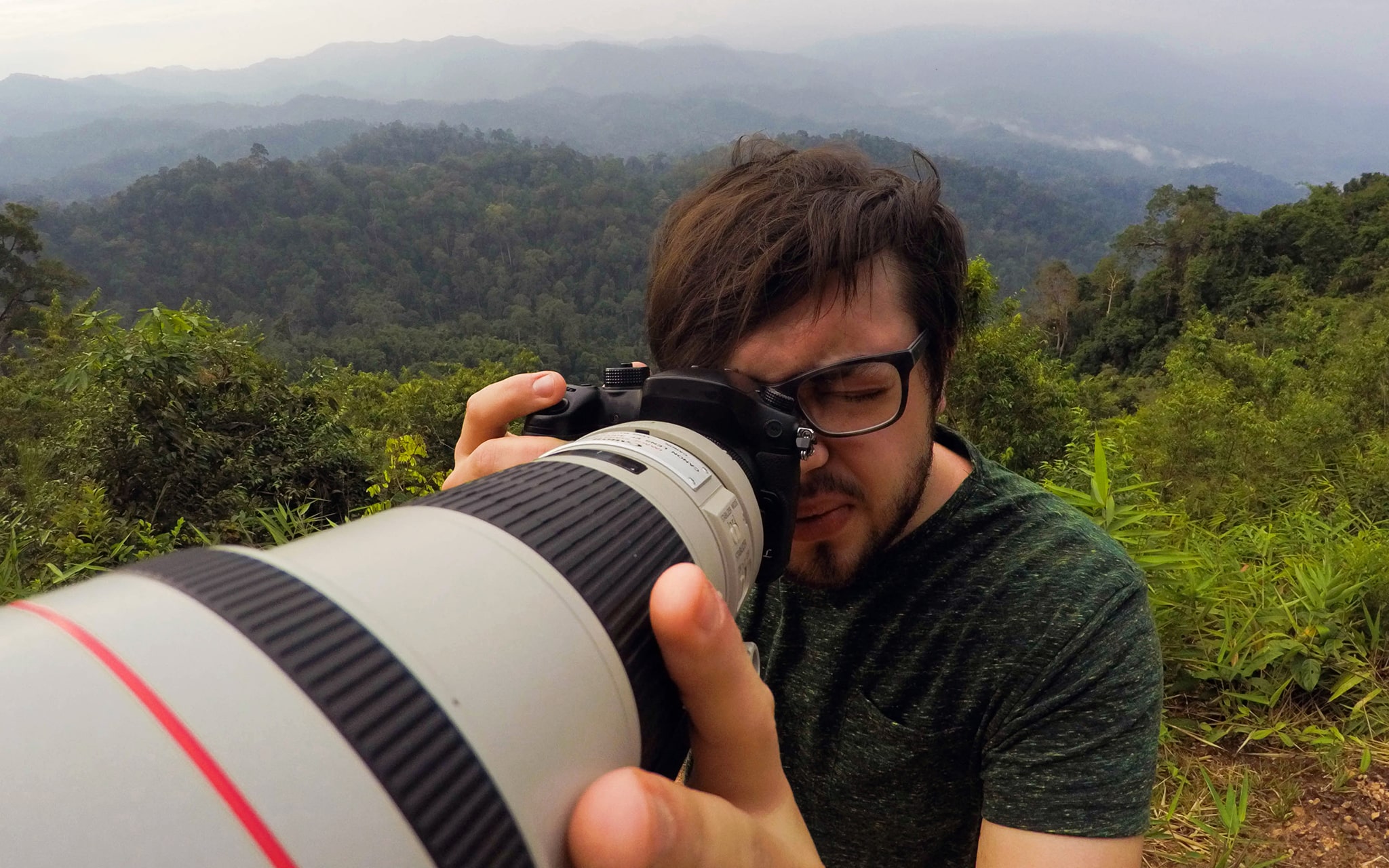“What camera do you use?”
Ok fine, I’ll tell you!
This is a question I get asked all the time so I thought I’d make a whole page about it. Photography gear is largely a means to an end for me, although I do get excited when I get my hands on toys which open up new possibilities.
A word of caution though: camera gear doesn’t matter if you don’t know how to use it. Talking about it is fun, but eventually you have to actually take it outside.
I’ve added a little FAQ at the end. If you still have questions please feel free to get in touch!
Note: As an Amazon Associate I earn from qualifying purchases. If you buy something through the links in this article it won’t cost you anything extra, but I’ll get a commission on the sale.
Camera Bodies
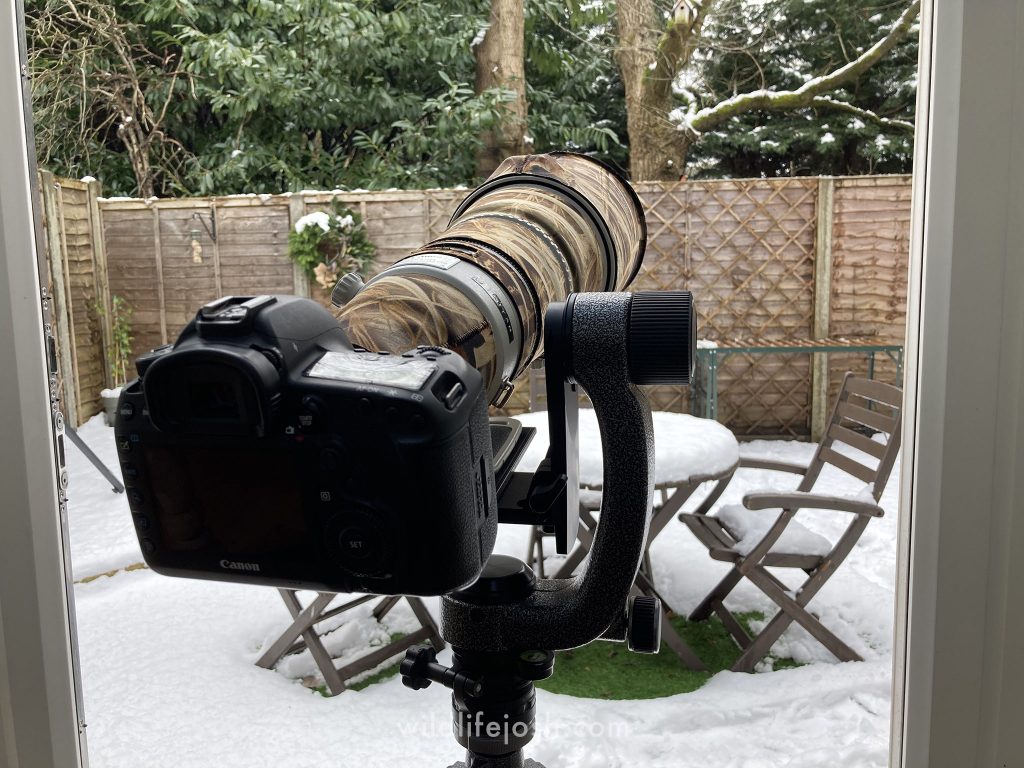
Canon 5D Mark IV
This has been my main stills camera ever since its release in 2016. At only 7 frames per second it might not be the fastest camera out there for wildlife photography, but the image quality and resolution (30.1 megapixels) more than make up for it. Besides, I’m not much of a “spray and pray” kind of shooter anyway. Being a full frame camera, the low light performance is also excellent.
Canon 7D
Before the 5D Mark IV, my main camera was a 7D. I took it around the world and gave it plenty of abuse, and it’s currently living out its final days as a remote camera trap (at least on the days it decides to work). Both this camera and the Mark II which replaced it are now discontinued, but it seems that this is the current equivalent.
Long Lenses
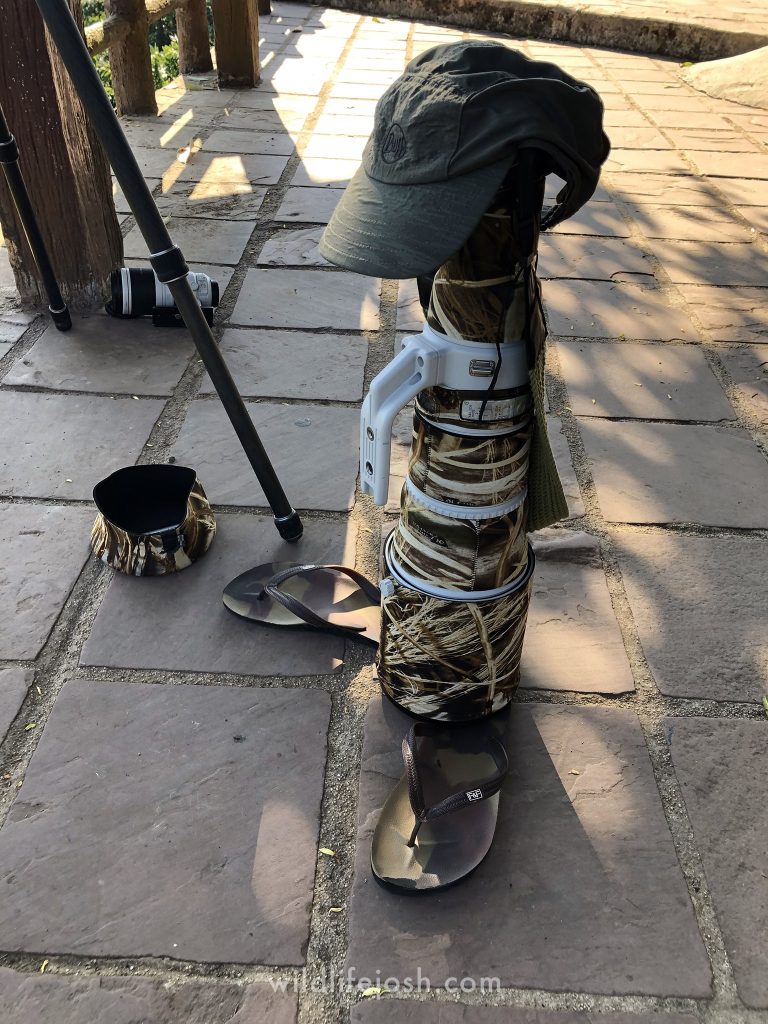
Canon 100-400mm f/4.5-5.6L IS II
If I could only own one lens for wildlife photography it would be this one.
It’s light, it’s sharp, it has a focal length range which can cover every general wildlife photography situation, and the impressive minimum focus distance is surprisingly useful for macro-esque shots in a pinch. Sure, there might be times where I’d rather reach for a proper macro lens or a wide angle in specific situations, but I can almost always get a useable shot with this lens. The only downside is the slow minimum aperture, but that’s the trade-off with such a versatile lens.
Canon 500mm f/4L IS II
This lens is my baby. It’s perfect for hide-based and vehicle-based photography (safaris etc), and even though it weighs more than double my 100-400 I never regret making the effort to take it out on hikes. It spends most of the time married to a 1.4x III teleconverter, turning it into a 700mm f5.6 bird photography machine which feels well-balanced when carried by the attached handle.
If you’re serious about your wildlife photography and wondering whether a massive lens is worth the upgrade, the answer is yes. It absolutely is.
Canon 300mm f/4L IS
Back when I had my 7D, this is the lens that travelled the world with it. The combination of cropped sensor and lightweight telephoto lens made for a great little wildlife photography setup. It’s a great first lens for wildlife photography as the reach is very useable, but at the same time it’s not crazy heavy and unwieldy.
That’s not to say it can’t be used professionally though. Photos I’ve taken with this lens have ended up in books, magazines and exhibitions. It’s certainly a capable lens. I traded in my 300mm lens a few years ago, but I’ve missed it ever since and often think about buying another…
Macro Lenses
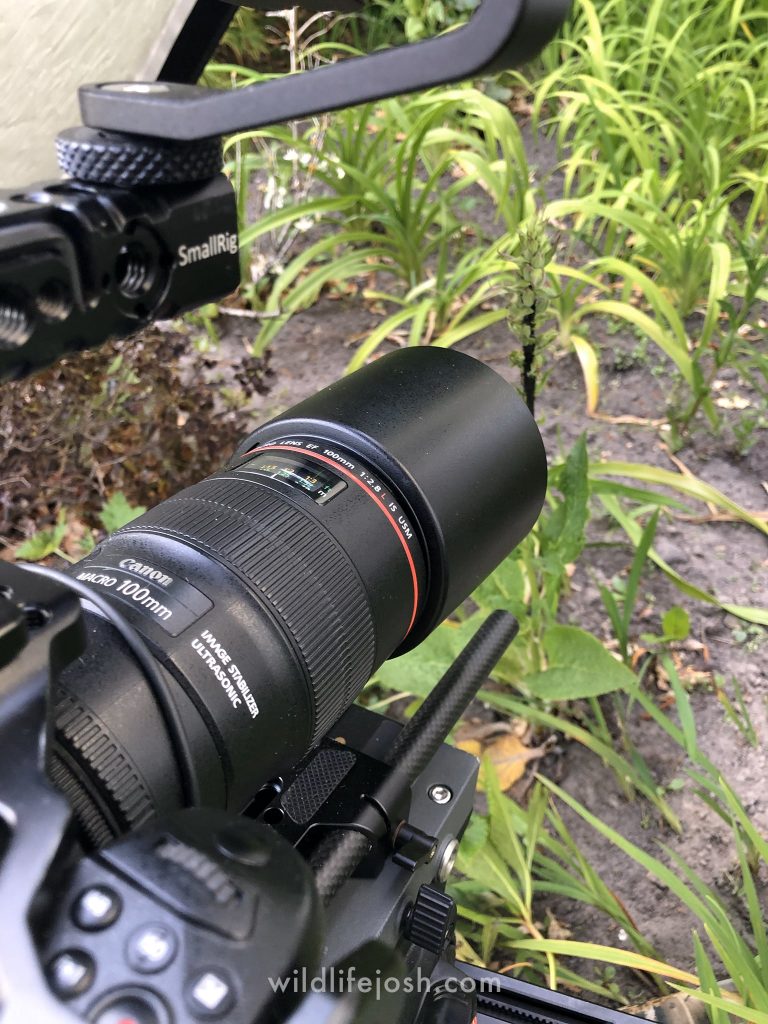
Canon 100mm f2.8L IS
Macro photography isn’t a style I partake in very often, but I really enjoy the challenge when I do. This 100mm macro lens covers most general macro situations without complaint, and I also find it quite pleasing when used as a portrait lens.
Laowa 15mm f4 Wide Angle Macro
This is a new lens for me, but I absolutely love the unique view it gives me on the natural world. It’s not the easiest of lenses to work with but I can’t wait to shoot with it more over the next year and really put it through its paces. Stay tuned!
Tripods
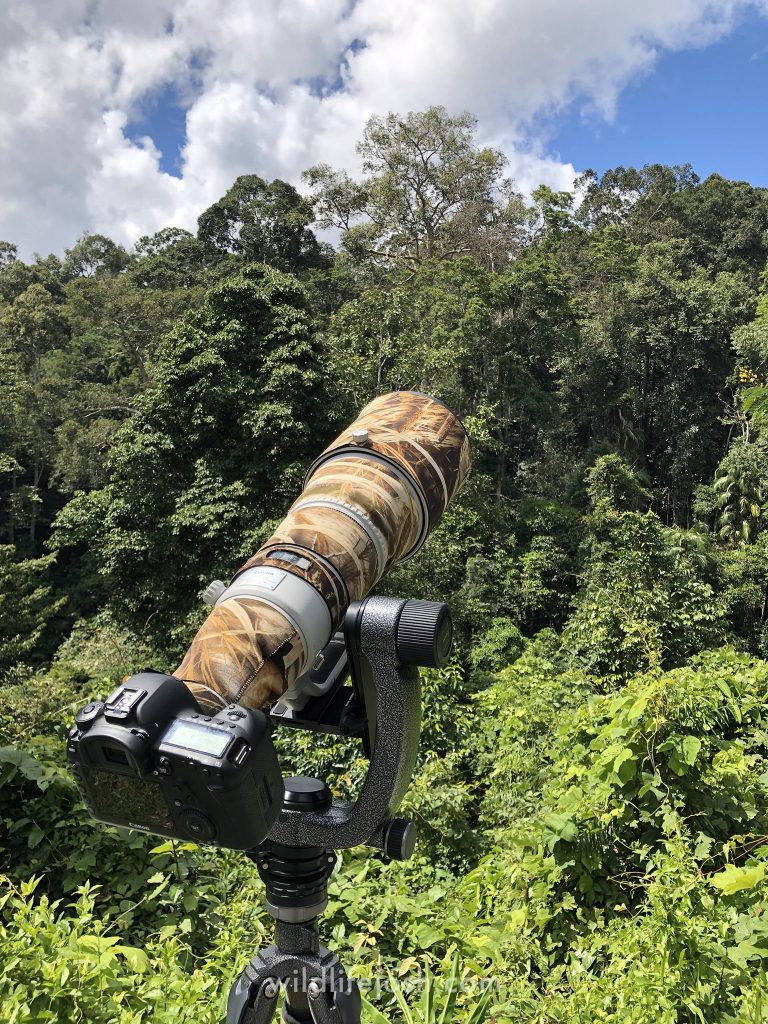
Gitzo GT3542L Series 3 Mountaineer Tripod
My main tripod for wildlife photography. It’s lightweight and sturdy, so I couldn’t really ask for much more! I’ve removed the centre column from mine which allows me to get down nice and low (why is that important?) and I most often pair it with my Gitzo Fluid Gimbal Head and 500mm lens.
Gitzo Fluid Gimbal Head
When properly balanced this allows me to move my big 500mm lens around smoothly, and when I take my hand off the camera it stays exactly where it is – as if it’s floating in the air! I spent hours just playing with it when I first got it.
A fluid head like this is great for setting up a shot and waiting for the action to happen, and ever since I’ve owned one my success rate has greatly improved in those situations. By this point I think Gitzo should just sponsor me…
Bags
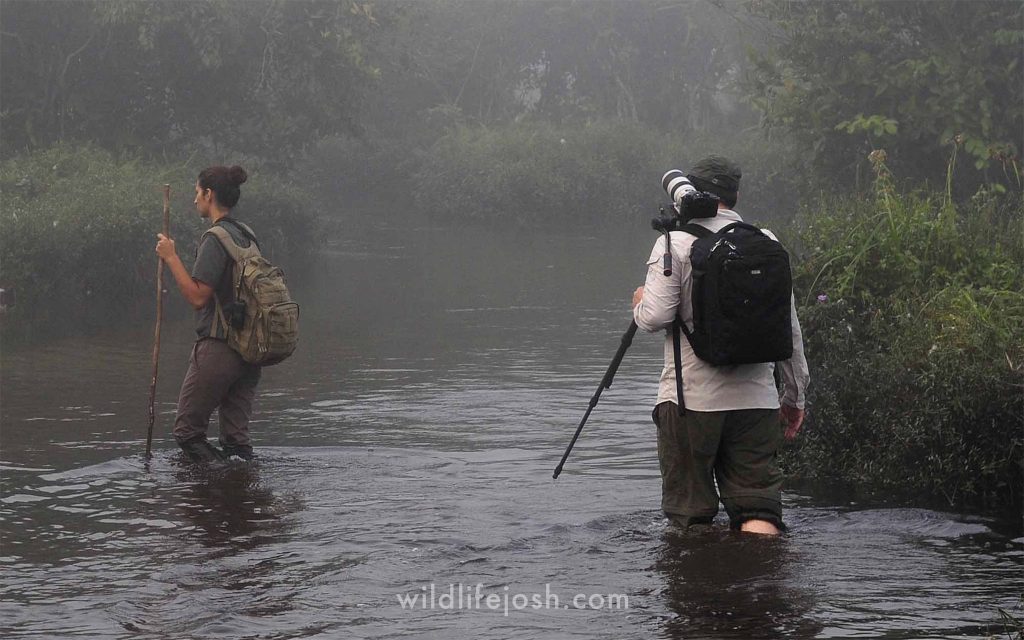
Think Tank Airport Accelerator & Airport Commuter
These are the two camera bags I use the most for international travel. They’re about as large as possible whilst still being within airline carry-on limits (although the weight is often questionable!). Think Tank gear is well thought-out, it’s comfortable even when heavy, and hasn’t let me down yet. They also do smaller bags if you’re not carrying around as much gear!
Think Thank Digital Holster 30 V2
I said earlier that the 100-400mm lens is my go-to lens for general photography, and this is the bag I carry it around in. That lens and my 5D fit snugly in this, with just enough space to fit a spare battery and SD card. It’s perfect for hot weather when I don’t want to have a sticky backpack on, or to help protect my camera when I get caught out in the rain.
Essential Accessories
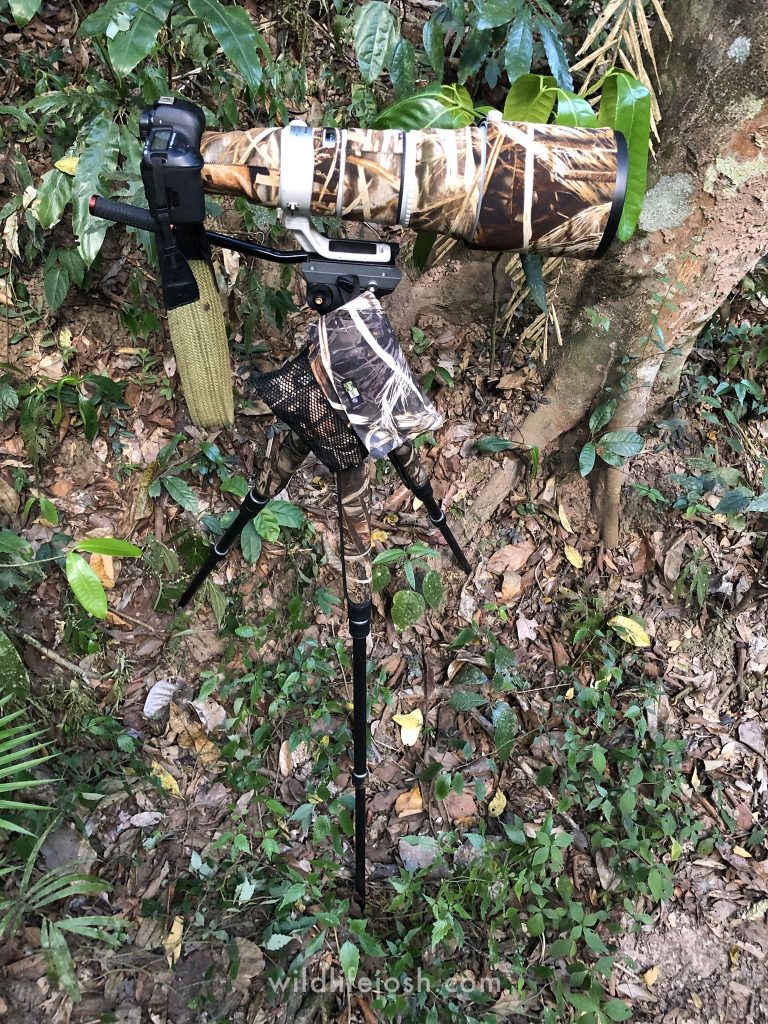
LensCoat covers
I have these on my 500mm and my tripod legs. It’s not just a fashion statement – they help break up the outline of the camera amongst foliage which helps them blend in and help reduce my impact on the animals I’m photographing. They’re also much nicer to hold than the bare tripod legs when they’re scorching hot or freezing cold!
Canon 1.4x III teleconverter
The quality of these mark III teleconverters is incredible, and I don’t notice any loss in image quality or autofocus speed when I pair it with my 500mm. I’ve even used it a few times with my 100-400mm have had no problems besides the slow aperture with that pairing. It’s perfect for getting closer to those birds!
FAQ
Why canon?
I grew up seeing pictures of wildlife photographers with those big white lenses, so that’s what I wanted when I started out. I’ve found that collecting a set of great Canon lenses is also the most useful for filmmaking too, as adapters are widely available for using EF lens on most camera systems.
Why not mirrorless?
The simple reason is that the last time I upgraded my photography camera (in 2016) I didn’t feel like there were any serious options. The market has moved on a lot since then, and I have had some great experiences with mirrorless cameras from Panasonic, Fuji and Sony in recent years, and the extra features they offer can be very useful tools. It seems like Canon are moving away from DSLRs now, so I guess my next stills camera will be mirrorless in one way or another!
Which is better, prime lens or zoom lens?
There’s something beautiful about the simplicity of a prime lens. Not just the better quality or lower f-stops, but the limitation of only having one focal length. It pushes you to really consider your composition – even when your gut reaction might be that you’re too close or too far away to get the shot you want. I think a 300mm prime lens is the best place to start for a beginner who is getting serious about wildlife photography.
I’m a beginner, what gear should I buy?
If you’d like to mostly photograph mammals and birds, you can’t go wrong with a 300mm lens and a crop sensor camera. If that’s too expensive, have a look at something like a 70-300mm – the quality might not be quite as good as a more expensive lens, but it will get you thinking about composition using long lenses and set you up well for when you upgrade later on.


